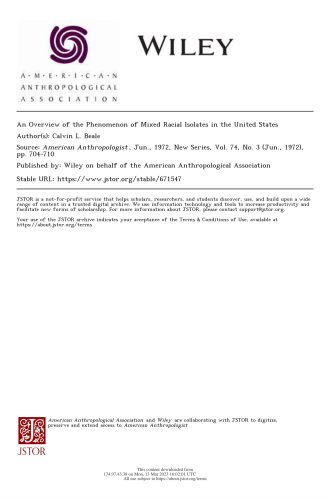NOTE: THIS WEBSITE IS A WORK IN PROGRESS. RESOURCES AND DATA ARE ADDED DAILY.
IMPORTANT: We are in urgent need of funding to keep this project alive and ensure its future. If you’re enjoying the site and see our vision for the project, please consider joining as a paid member or contributing to our crowdfunding campaign today. It is only with your help that we can continue this work.
Thanks so much for your support! – Jes
![]()
An Overview of the Phenomenon of Mixed Racial Isolates in the United States
share:
- UPDATED: 6.17.2025
- status: high-priority, in progress
- Peoples, Melungeons, Mixed Ancestry Peoples
Info + Help
author:
Calvin L. Beale
publication:
DOI:
n/a
date:
June 1972
pages:
pp. 704-710
notes:
abstract:
surnames:
places:
peoples:
CMOS:
Calvin L. Beale. “An Overview of the Phenomenon of Mixed Racial Isolates in the United States.” American Anthropologist 74, no. 3 (1972): 704–10. https://www.jstor.org/stable/671547.
author-date:
Beale 1972
Other Resources
- Origin Traditions of American Racial Isolates: A Case of Something Borrowed
- Erasures of the Past: Culture, Power, and Heterogeneity in Appalachia
- A Panel of Ancestry Informative Markers for Estimating Individual Biogeographical Ancestry and Admixture From Four Continents: Utility and Applications
- The ‘Twenty and Odd’: The Silences of Africans in Early Virginia Revealed
- Melungeons, A Multi-Ethnic Population
- Will Allen Dromgoole: A Biographical Sketch

